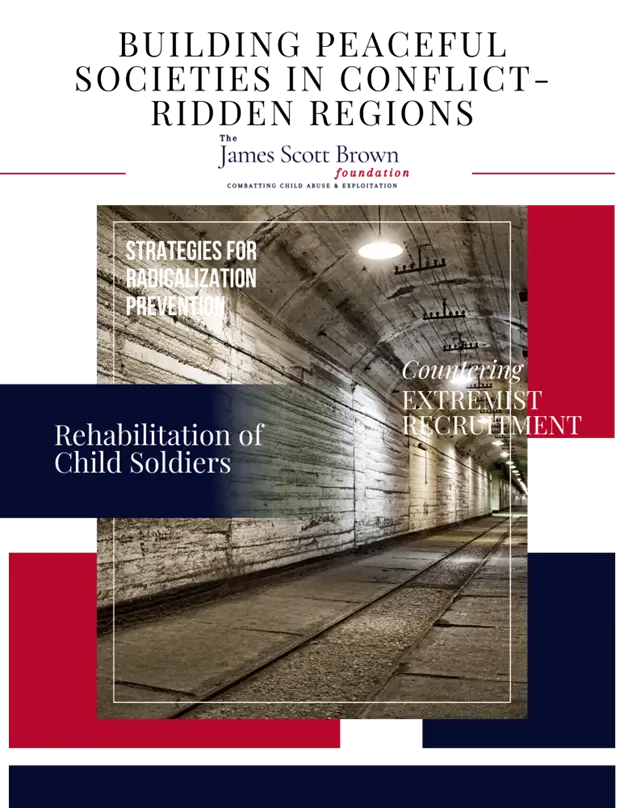Building Peaceful Societies in Conflict-Ridden Regions
This manual presents an extensive exploration of strategies and methods for fostering peace in conflict-ridden areas. It delves into understanding radicalization dynamics, mapping complexities in terrorist recruitment, designing effective research, and employing data-driven change management. The guide also emphasizes the importance of education, identity politics, inclusion, restorative justice, and gender roles in peacebuilding, along with practical steps for creating peace-based learning schools and conflict resolution programs.

This detailed instructional manual offers an in-depth analysis and comprehensive strategies for building peaceful societies in regions afflicted by conflict. It begins by understanding the dynamics of radicalization in places like Mindanao, Philippines, and progresses to explore the complexities of countering terrorist groups like Boko Haram and Al Shabaab. The guide underscores the critical role of education in cultivating cultures of peace and countering radicalization, emphasizing the inclusion of gender perspectives and the importance of integrating identity politics, inclusion, and restorative justice in these efforts. It also outlines practical steps for designing and conducting effective research, using data to inform impactful change management strategies, and developing capacities for sustainable prevention of radicalization. Additionally, the guide discusses the creation and sustainability of peace-based learning schools, and the development of effective conflict resolution and peer mediation programs, making it a comprehensive resource for anyone committed to the cause of peace in conflict-ridden regions.
Table of Contents
Introduction
Chapter 1
Understanding the Dynamics of Radicalization and Peacebuilding in Mindanao, Philippines
Chapter 2
Mapping Fragilities and Complexities in Countering Terrorist Recruitment in Boko Haram and Al Shabaab
Chapter 3
Designing and Conducting Effective Research for Countering Radicalization and Rehabilitating Child Soldiers
Chapter 4
Using Data to Inform Impactful Change Management Strategies in Preventing Radicalization and Rehabilitating Child Soldiers
Chapter 5
Developing Capacities for Sustainable Prevention of Radicalization and Rehabilitation of Child Soldiers
Chapter 6
Integrating Identity Politics, Inclusion, and Restorative Justice in Radicalization Prevention and Rehabilitation of Child Soldiers
Chapter 7
Building Global Citizenship Programs for Sustainable Countering of Terrorist Recruitment and Rehabilitation of Child Soldiers
Chapter 8
Providing Education for Sustainability in Emergencies: Armed Conflict, Disaster, and Health Crises for Children at Risk of Radicalization
Chapter 9
Gender and Peacebuilding: Understanding Women’s Role in Countering Radicalization and Rehabilitating Child Soldiers
Chapter 10
The Role of Formal Education in Cultivating Cultures of Peace and Nonviolence in Conflict-Ridden Regions
Chapter 11
Education for Peace: Key Topics and Concepts for Cultivating a Culture of Peace and Countering Radicalization
Chapter 12
Education by Peace: Fostering the Pedagogy of Peace in Teaching and Learning to Prevent Radicalization and Rehabilitate Child Soldiers
Chapter 13
Rethinking Traditional Education Structures and Systems to Support Radicalization Prevention and Rehabilitation of Child Soldiers
Chapter 14
Creating and Sustaining Peace-Based Learning Schools: Design, Curriculum, and Funding Strategies for At-Risk Children
Chapter 15
Developing Effective Conflict Resolution and Peer Mediation Programs for Diverse Communities in Conflict-Ridden Regions
Q&A with the Author
What inspired you to write a guide focusing on building peaceful societies in conflict zones?
I was motivated by the increasing challenge of addressing extremist ideologies and terrorist groups in regions like Mindanao, Philippines, and parts of Africa. My goal was to provide a comprehensive guide that explores successful strategies for preventing radicalization, rehabilitating child soldiers, and countering terrorist recruitment.
How critical is the role of education in preventing radicalization and rehabilitating child soldiers?
Education plays a pivotal role. It’s not just about academic learning but cultivating cultures of peace and nonviolence. We explore how formal education can foster understanding, respect for diversity, and critical thinking, which are crucial in deterring radicalization and aiding rehabilitation.
Can you explain the significance of integrating identity politics, inclusion, and restorative justice in these efforts?
These elements are vital. Radicalization and the use of child soldiers often stem from issues of identity, exclusion, and injustice. Addressing these can mitigate feelings of marginalization and foster a sense of belonging, which is essential for effective radicalization prevention and rehabilitation.
What are the unique challenges of conducting research in conflict-ridden regions?
Conducting research in such areas involves navigating limited data access, security risks, and cultural barriers. Our guide provides a step-by-step approach to overcome these challenges and produce actionable insights for policy and practice.
How does the manual address the complexities of terrorist recruitment in groups like Boko Haram and Al Shabaab?
We map out the underlying factors contributing to recruitment, such as poverty, political instability, and the role of ideology. Our multi-disciplinary approach and use of data analytics help in developing targeted counterterrorism initiatives.
What is the importance of global citizenship programs in countering terrorist recruitment and rehabilitating child soldiers?
Global citizenship programs are crucial as they foster a sense of belonging to a global community, emphasizing social justice and human rights. They help individuals, especially at-risk youth, understand global issues and the importance of peace and nonviolence.
